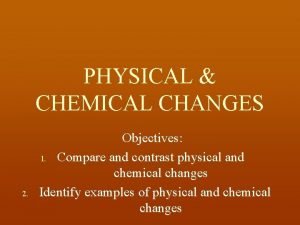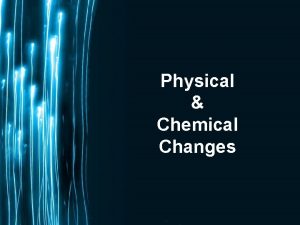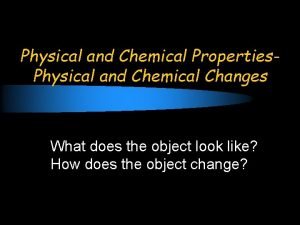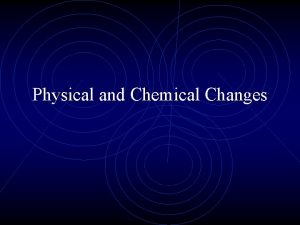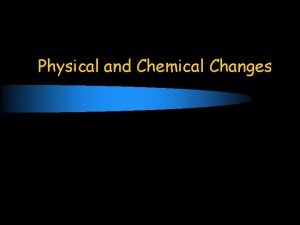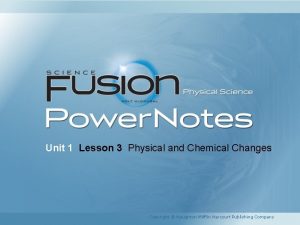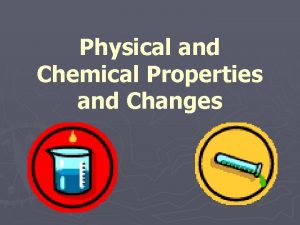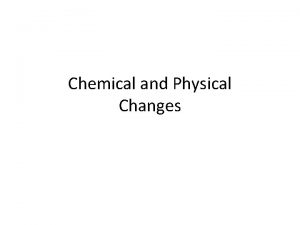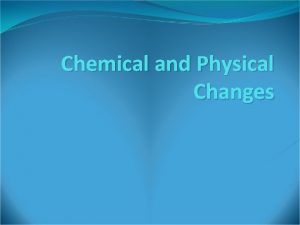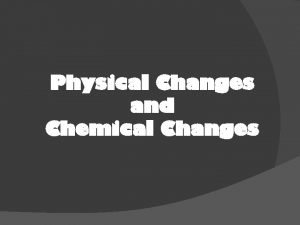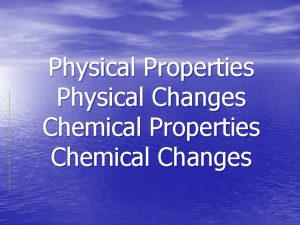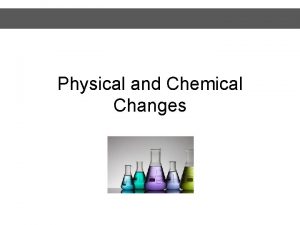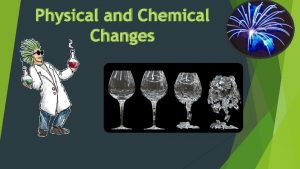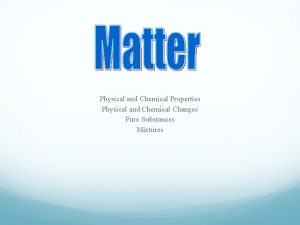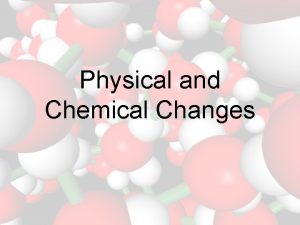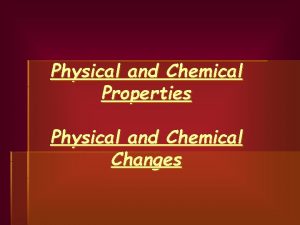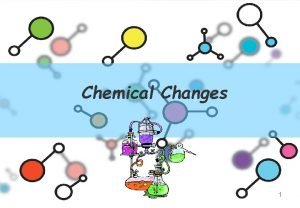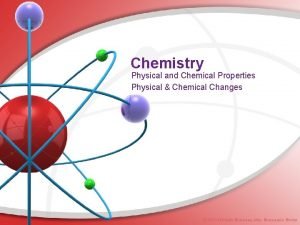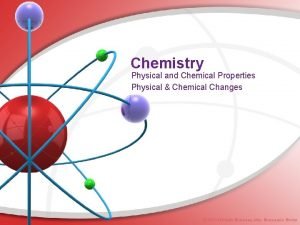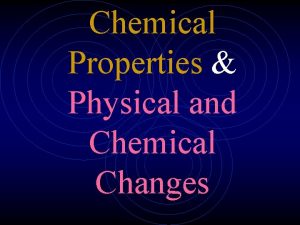Chemical and Physical Changes Physical Changes that do




















- Slides: 20

Chemical and Physical Changes

Physical Changes that do not affect the nature or the characteristic properties of a substance Ex. Breaking glass, phase changes

1. Chanes of State Phase change is a transformation from one state to another.

Energy in Phase Changes

Phase changes & Particle Model Phase change don’t affect characteristic properties Only the forces of attraction change Particles don’t change= “same”

Energy in phase changes Absorbs energy: liquid water + energy water vapour Releases energy liquid water ice + energy

2. Dissolution Creation of a solution by a solute dissolving in a solvent. Solutes may: Release energy -temp. increases

Absorb Energy: - temp. decreases

3. Deformation Means changing the shape of a material.

Chemical Changes that transform the nature and characteristic properties of a substance Ex. Burning wood, cooking food, Human body: - cellular respiration - digestion of food

Signs of a chemical change Change of colour Greater changes of heat Generation of Light Release of a Gas Formation of a Precipitate (a solid material forms in a liquid)

1. Synthesis Formation of a complex molecule from atoms or simpler molecules Ex. 2 H 2 + 02 2 H 2 O + energy

Ex. Photsynthesis - plants transform radiant energy into chemical energy(2. 45 p. 54)

2. Decomposition Transformation of complex molecules into simpler molecules or atoms. Ex. Electrolysis 2 H 2 O + electrical energy 2 H 2 + 02

Digestion is a form of decomposition

3. Oxidation Chemical reaction involving oxygen or a substance that has similar properties to oxygen. Slow- rusting of metals release energy Rapid- combustion of fuels, very fast

Ex. Oxidation of Copper 2 Cu + O 2 2 Cu. O

Cellular respiration

4. Precipitation Formation of a solid that is less soluble, or not soluble, following the mixture of two solutions. Ex. Enzymes produce Precipitation in milk to Produce cheese

Ex. Which product is the precipitate? Symbols: (g) = gas, (l) = liquid (s) = solid, (aq) = solution water
 Chemical and physical changes
Chemical and physical changes Compare and contrast chemical and physical changes
Compare and contrast chemical and physical changes Section 1 chemical changes
Section 1 chemical changes Physical and chemical changes
Physical and chemical changes Physical and chemical changes
Physical and chemical changes Is sawing wood a chemical change
Is sawing wood a chemical change Physical and chemical changes generation genius
Physical and chemical changes generation genius Wadding up paper
Wadding up paper What is an example of chemical and physical change
What is an example of chemical and physical change Difference between physical change and chemical change
Difference between physical change and chemical change Which is true about chemical change
Which is true about chemical change Whats physical change
Whats physical change Physical and chemical changes jeopardy
Physical and chemical changes jeopardy Chemical change baking
Chemical change baking Physical and chemical changes examples
Physical and chemical changes examples Lesson 3 physical and chemical changes answers
Lesson 3 physical and chemical changes answers True or false: chemical and physical changes alter matter.
True or false: chemical and physical changes alter matter. The science duo physical and chemical changes
The science duo physical and chemical changes Physical/chemical changes & properties color by number
Physical/chemical changes & properties color by number Chemical.properties examples
Chemical.properties examples Phân độ lown
Phân độ lown

